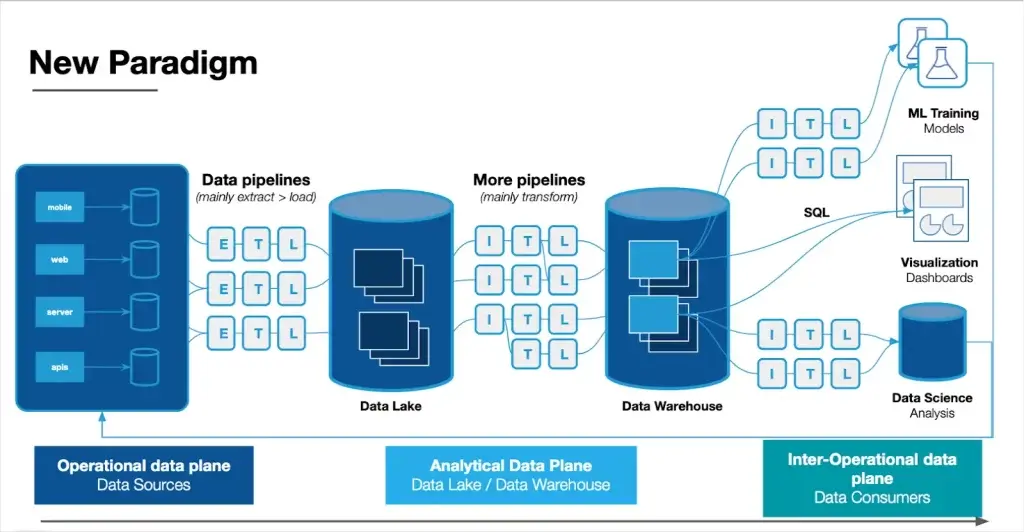
Michael writes about data engineering, data quality, and data teams.
Share this article
In this post, we will help you quickly level up your overall knowledge of data pipeline architecture by reviewing:
Table of Contents
Be sure to read to the end where we share 6 data pipeline architecture diagrams used by real data teams at companies like JetBlue, Fox Networks, Drata, and more. Let’s go!

Data pipeline architecture is the process of designing how data is surfaced from its source system to the consumption layer.
This frequently involves, in some order, extraction (from a source system), transformation (where data is combined with other data and put into the desired format), and loading (into storage where it can be accessed). This is commonly abbreviated and referred to as an ETL or ELT pipeline.
It’s important to understand most data pipelines aren’t a linear movement of data from source A to target B, but rather consist of a series of highly complex and interdependent processes. For example, data may be extracted from multiple sources, reorganized, and joined at different times before ultimately being served to its final destination.
For data engineers, good data pipeline architecture is critical to solving the 5 v’s posed by big data: volume, velocity, veracity, variety, and value. A well designed pipeline will meet use case requirements while being efficient from a maintenance and cost perspective.

The Hadoop era, roughly 2011 to 2017, arguably ushered in big data processing capabilities to mainstream organizations.
Data then, and even today for some organizations, was primarily hosted in on-premises databases with non-scalable storage. Despite Hadoop’s parallel and distributed processing, compute was a limited resource as well.
As a result, data engineers spent considerable time modeling data and optimizing queries to fit within these constraints. Data pipeline architecture typically consisted of hardcoded pipelines that cleaned, normalized, and transformed the data prior to loading into a database using an ETL pattern.
Some organizations choose to still leverage an ETL pattern in the cloud, particularly for production pipelines where data contracts can help reduce data downtime.

The modern data stack era, roughly 2017 to present data, saw the widespread adoption of cloud computing and modern data repositories that decoupled storage from compute such as data warehouses, data lakes, and data lakehouses. The term modern data stack refers to the multiple modular SaaS solutions that comprise the data platform and pipeline (more on those later).
With cost and physical compute/storage limitations largely lifted, data engineers started to optimize data pipeline architecture for speed and agility. Data could now be extracted and loaded prior to being transformed for its ultimate use. This scale and flexibility of the cloud and an ELT design pattern unlocked additional valuable use cases such as more widespread analytics, experimentation, and machine learning applications.

While these batch data pipelines were ideal for analytical use cases, there has been an increased need for near-real time data. Streaming data pipeline architectures are typically run in parallel to modern data stack pipelines and used mainly for data science or machine learning use cases. Apache Kafka is the most common tool and it comes in many flavors (Confluent Cloud, AWS MSK, self-hosted, etc).
The pattern can be described as stream, collect, process, store, and analyze. The most common architecture involves sending raw data directly to the application, but sometimes Flink is used as part of the transformation process. Another common pattern is to also land this data in a lake/lakehouse, eventually making its way to a warehouse for analytical use cases.
The direct source to application streaming data pipeline architecture can present challenges such as the inability to fully validate data quality or model the data. However, the value and benefits of near-real time data are hard to deny.
Data pipeline architectures are constantly being reinvented. Two emerging data pipeline architectures include zero ETL and data sharing.

Zero ETL is a bit of a misnomer. These pipelines differ from traditional ELT pipelines by doing the data cleaning and normalization prior to load. In many cases the data stays in a data lake and is queried from there versus moving to the data warehouse.
At the moment, this tight integration is possible because most zero-ETL architectures require both the transactional database and data warehouse to be from the same cloud provider. Some examples include AWS (Aurora to Redshift), GCP (BigTable to BigQuery) and Snowflake (Unistore).
This trend is competing with another data pipeline architecture undercurrent where some organizations are considering decoupling their storage and compute at the vendor level with companies like Tabular.

No copy data sharing is another emerging data pipeline architecture being pioneered by Snowflake (Secure Data Sharing) and Databricks (Delta Sharing). Unlike ZeroETL, this process actually doesn’t involve ETL and instead provides expanded access (permissions) to the data where it’s stored.
Remember, these aren’t a binary choice. Most organizations deploy some or all of these data pipeline architectures.
The modern data stack universe has a data warehouse, lake, or lakehouse as its center of gravity with numerous, modular solutions that integrate with one another orbiting around it.
If you zoom out to look across the entire data platform solution landscape it can get confusing and messy really quickly (although LakeFS does do a nice job organizing it in the image below).
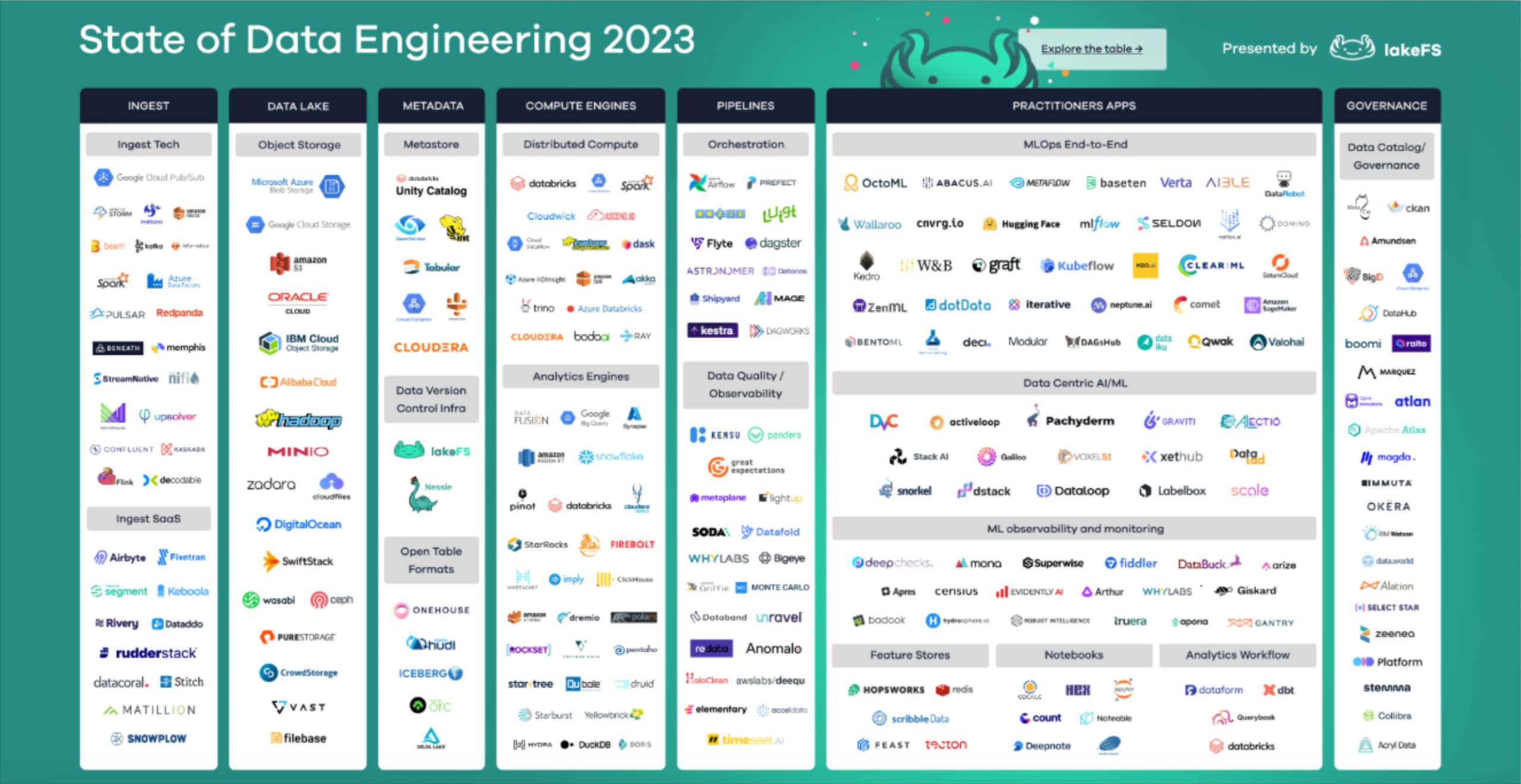
That’s why it can be more helpful to consider these solutions by the role they play within modern data pipeline architecture. This is frequently referred to as a 5 or 7 layer (depending on who you ask) data stack like in the image below.
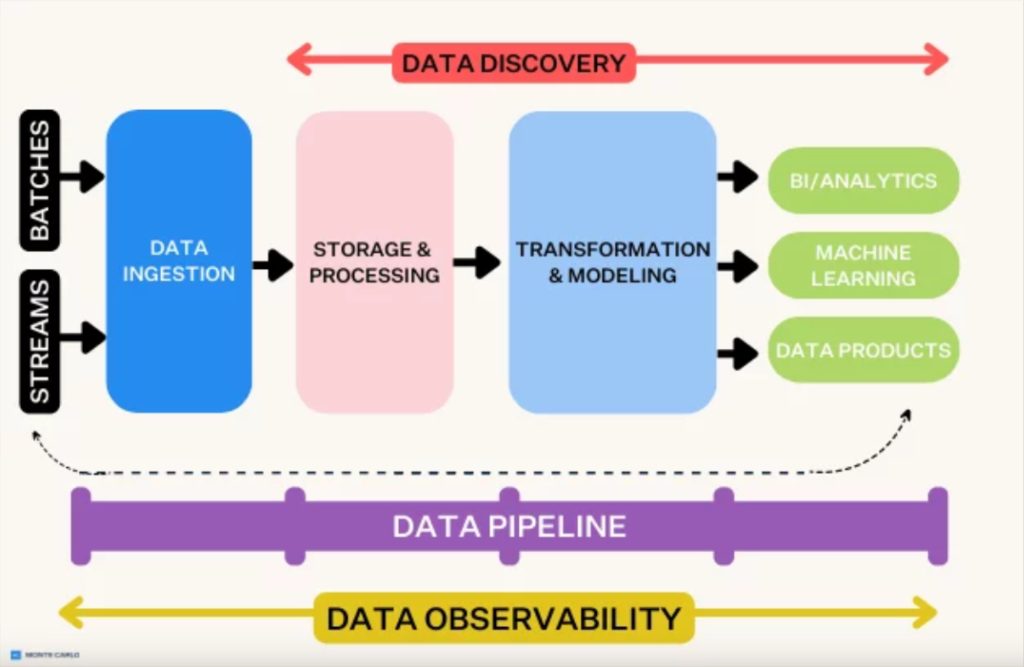
Here are some of the most common solutions that are involved in modern data pipelines and the role they play.
Don’t forget the SQL query code (or whatever language you are using with Spark) is part of your data pipeline architecture! Data flows from table to table (or dataframe) within your data repository and query changes can dramatically impact quality and performance.
Batch data ingestion solutions include:
Data streaming ingestion solutions include:
Some organizations choose to implement data catalog solutions for data governance and compliance use cases. Data catalogs leverage the metadata generated through a modern data platform to provide descriptive information on critical data assets such as tables, key metrics, and more. Think of an automatically updating encyclopedia for your data platform.
We have compiled a list of the best data catalog tools.
You want the data in your modern data platform to be highly available only to those who have a need to access it. Access management solutions have become more critical as a means to protect sensitive information and PII as well as to avoid fines from data regulations such as GDPR or CCPA. Vendors in this space include:
And all of this doesn’t include solutions common to data science pipeline architecture such as notebooks, feature stores, metastores MLOps and more.
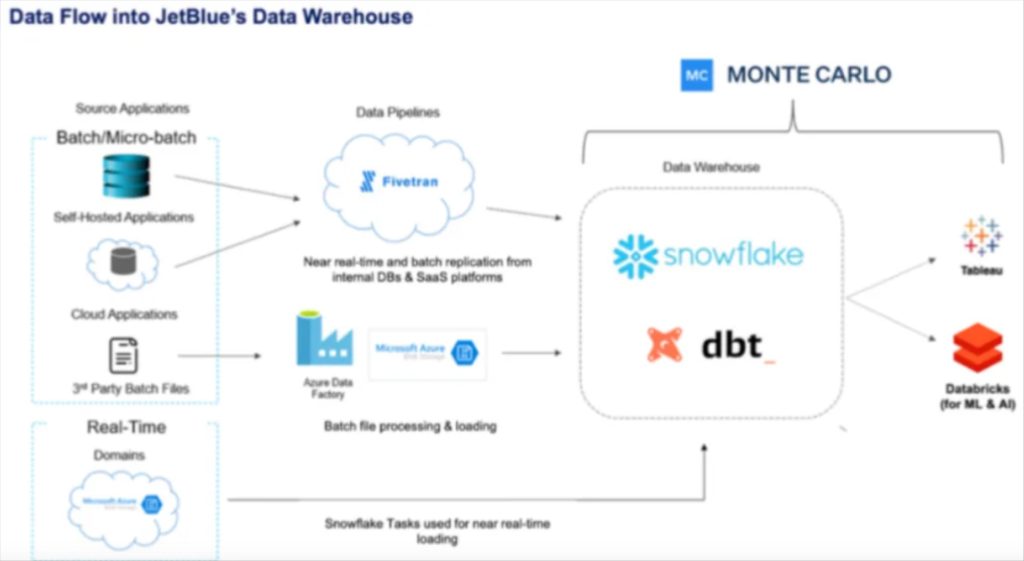
JetBlue’s data pipeline architecture balances multiple data sources and data freshness requirements. Snowflake Tasks are used for near real-time loading in lieu of a more traditional streaming data pipeline architecture. FiveTran is used to batch ingest data which lands in Snowflake and is transformed by dbt and monitored for quality by Monte Carlo. Databricks supports it’s ML and AI use cases. Learn more by checking out the webinar they did with Snowflake.
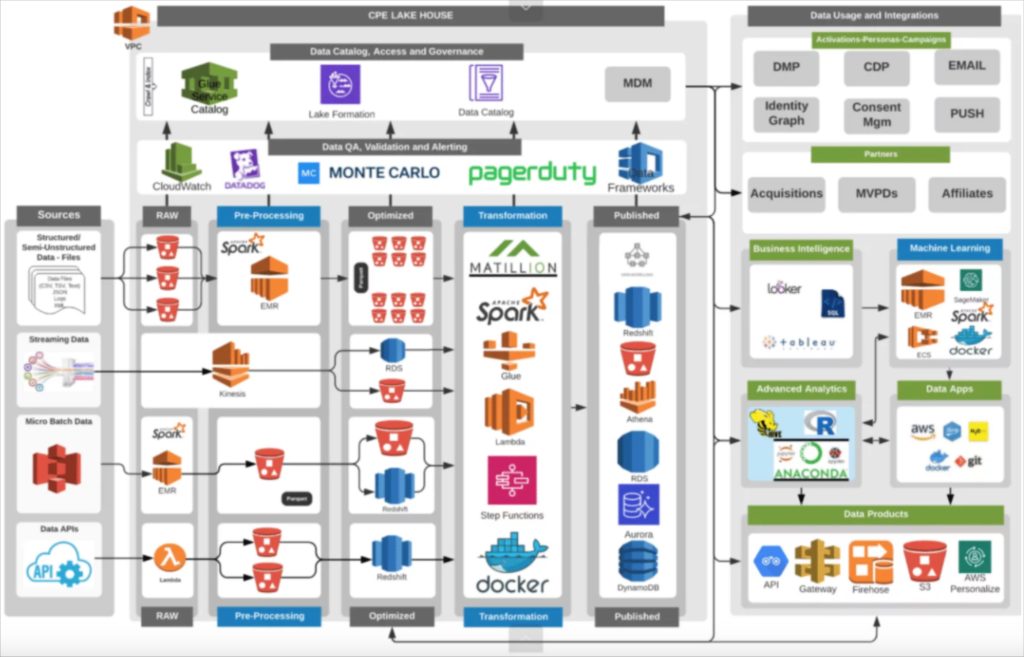
Fox’s data pipeline architecture is designed for resilience and reliability, in alignment with the network’s goals. When you are airing the Superbowl, you want everything to run without a hiccup. As such, reliability tools such as Datadog (application performance management), Monte Carlo (data observability), and PagerDuty (incident management) are all present. You can also see a robust streaming and microbatch architecture with Spark and various AWS services given their need for real-time data.
Fox’s VP of Data Services, Alex Tverdohleb told us his data pipeline architecture is designed with self-service in mind.
“Everything else, especially within data discovery and your ad-hoc analytics, should be free,” said Alex. “We give you the source of the data and guarantee it’s trustworthy. We know that we’re watching those pipelines multiple times every day, and we know that the data inside can be used for X, Y, and Z — so just go ahead and use it how you want. I believe this is the way forward: “striving towards giving people trust in the data platforms while supplying them with the tools and skill sets they need to be self-sufficient.”
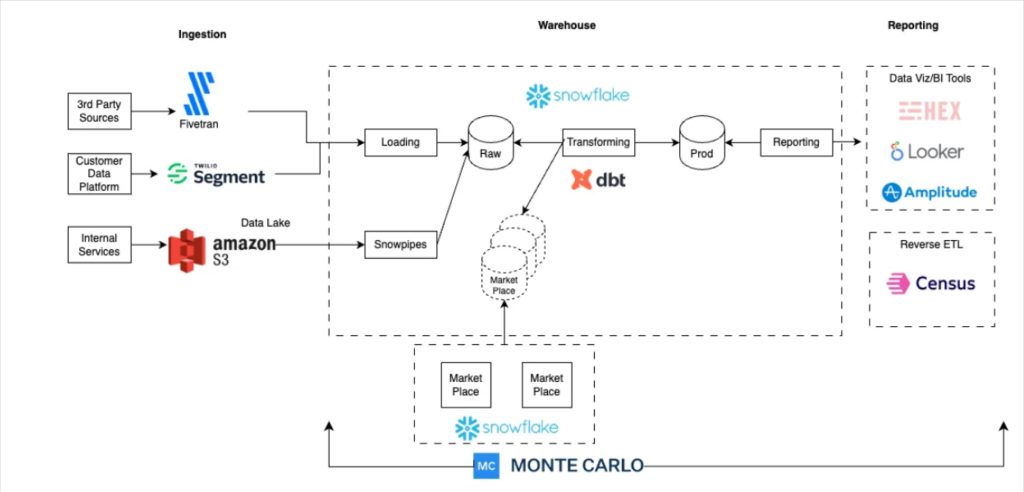
Startup Swimply’s data pipeline architecture is well-automated and designed with simplicity and scale in mind. Fivetran, Snowflake, dbt, Monte Carlo, and Looker are solutions that integrate very well together.
Head of data Michael Shledon says, “Because we had this mandate as a data team to support the entire company, we needed a data stack that could solve two central issues. One, to centralize all of the data from all of the different parts of the company in one stable place that everyone could use and refer to as a source of truth. And two, to enable us to have enough time to really focus on the insights and not just the data infrastructure itself.”
Read more about Swimly’s hypergrowth stack.
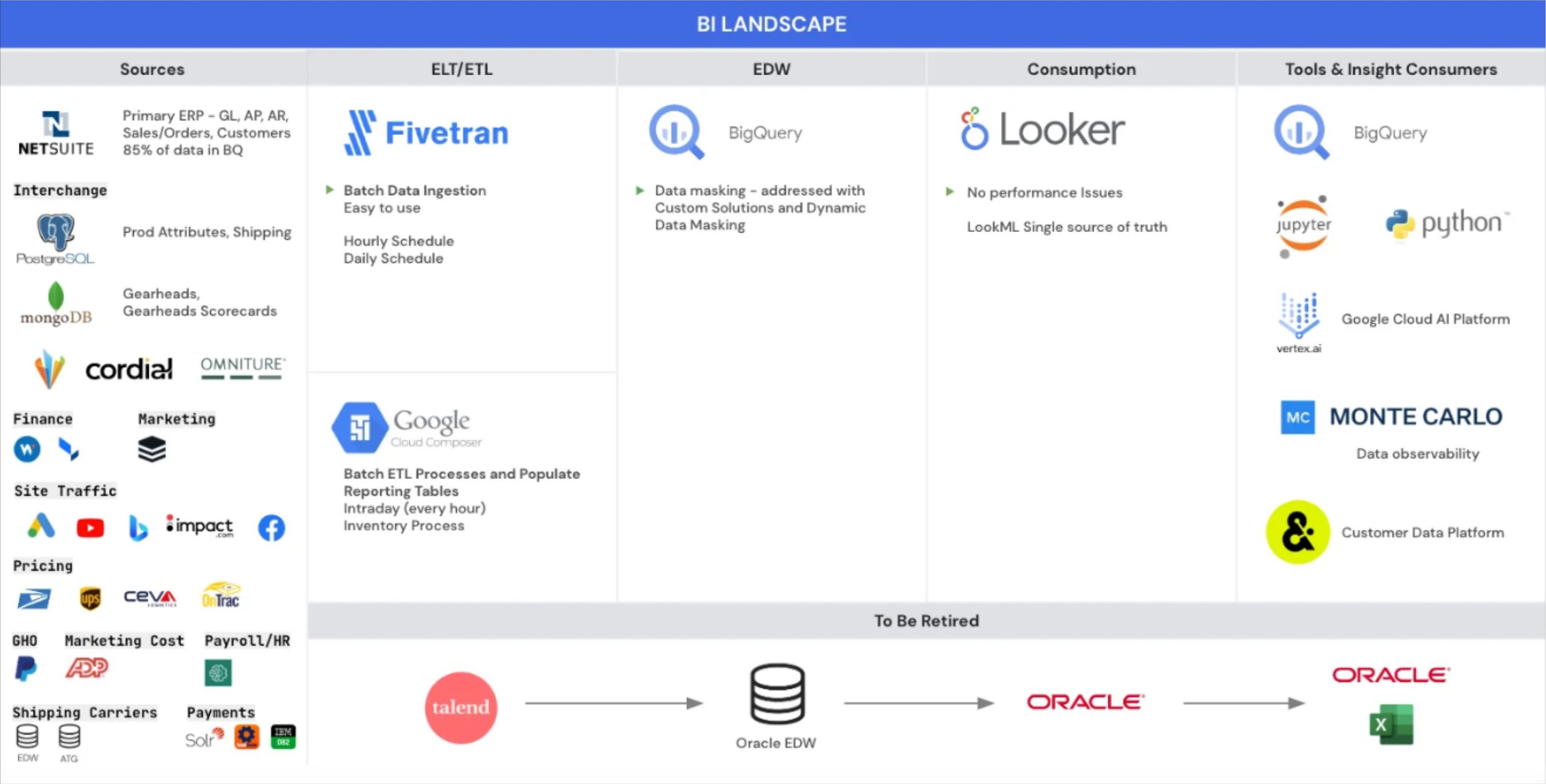
Backcountry relies on data to power nearly every facet of its business, including customer acquisition, segmentation and personalization, marketing, merchandising, and customer support. But the data team was ingesting large amounts of data from an ever-increasing number of sources, and the legacy system wasn’t able to perform at scale.
So the Backcountry team had to move quickly to migrate from a legacy stack to a modern data stack. They built their stack around the Google Cloud Platform, including BigQuery, Looker, Airflow, and Fivetran.
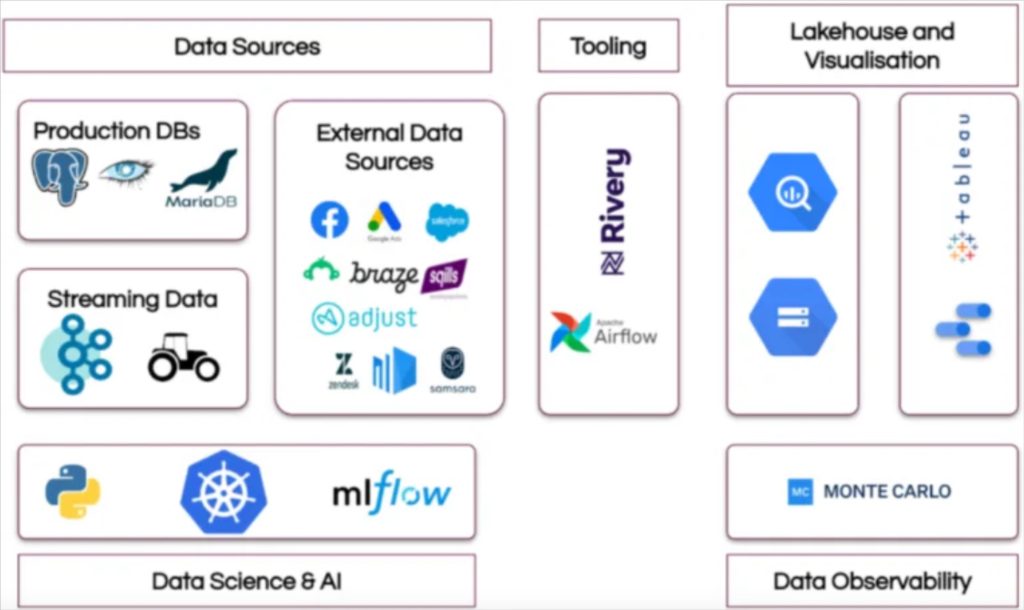
BlaBlaCar’s data pipeline architecture is part of its data mesh implementation. This transition to a more decentralized structure was critical to accelerate team efficiency following two M&As.
“We had some new use cases around data science that were hard to fit into our existing org. That’s essentially what triggered the discussion of ‘We need to do things differently,’” said Emmanuel Martin-Chave, VP of data analytics. Read more.
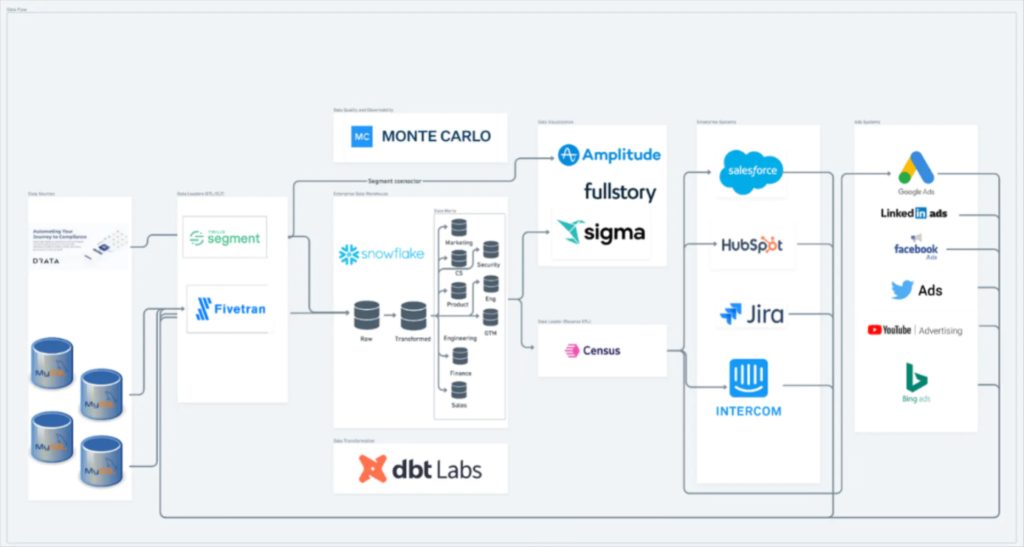
VP of data Lior Soloman got to build this modern data architecture from the ground up and he stood it up fast. He said, “Choosing the right technology stack is critical for a fast-growing startup. I wanted to select technologies that would scale with our fast-growing business, be easy to use, and seamlessly integrate with our existing systems.”
Remember, it’s not about having the right data pipeline architecture, it’s about having the right data architecture for you.
Interested in adding data observability to your data pipeline architecture? Schedule a time to talk to us using the form below!